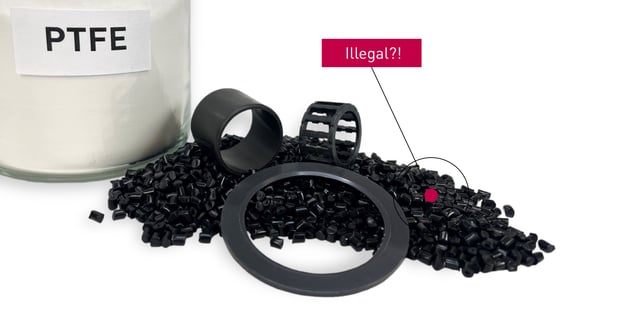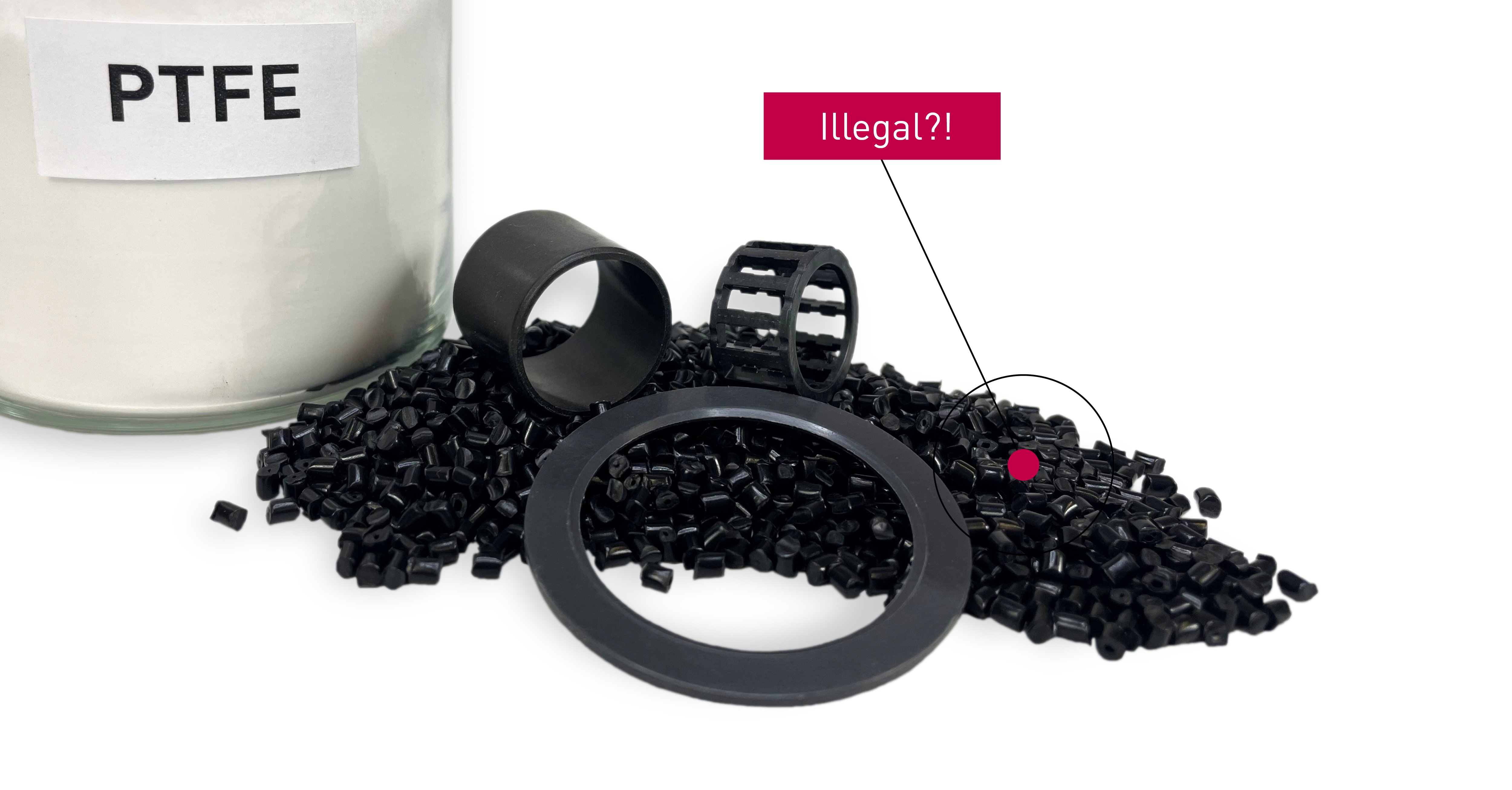PFAS should be banned!? What now? And where do we stand in terms of replacing PTFE?

Since mid-January of this year, the call for a ban on perfluorinated and polyfluorinated alkyl substances (PFAS) has been the talk of the town, and not just throughout the industry. And as befits our times, the news, questions, prophecies and prophecies of doom have been pouring in. Time for us to name the facts, to take stock of the situation and to illuminate future scenarios.
None other than the European Chemicals Agency (ECHA) - the European Union agency responsible for implementing EU regulations on the registration, evaluation and authorization of chemical substances - is proposing a ban on the use of PFAS in certain products for consumers and professionals. The background to this proposal, the most far-reaching to date, is concern about the potential health or environmental risks of PFAS.
Why is the issue of PFAS replacement making such waves?
PFAS is used in an extreme variety of products. In cookware as well as in clothing, in industrial applications and also in firefighting foam. Without PFAS, there would currently be no green mobility and no clean energy generation such as wind power - which in turn is an important part of the European Green Deal. PFASs are therefore anything but "easy" to replace.
What are the chemical characteristics of PFAS?
What all PFAS compounds have in common is their particularly strong carbon-fluorine bond, which ensures, for example, especially good resistance to virtually all chemicals. However, this extremely high chemical stability of the molecules is also the reason why these compounds are hardly biodegradable and therefore also bear the ominous epithet "eternity chemicals". Many of these mostly short-chain chemicals can accumulate in various organisms and can also be harmful to health.
An exception within the PFAS substance class is polytetrafluoroethylene (PTFE). PTFE is a polymer consisting of very long perfluorinated alkyl chains. By definition, it therefore also belongs to the PFASs, but - as you will read in a moment - it has a different characteristic.
The catch: PTFE comes under general suspicion
Due to its lack of discriminatory power, PTFE comes under general suspicion, which LEHVOSS - like the entire industry - is critical of. After all, unlike PFAS:
- chemically and thermally stable,
- biologically unavailable,
- tested many times and proven, for example, in medical products or implants and
- unlike PFAS, cannot accumulate in the environment or in living organisms.
For this reason, the general proposal to ban the PTFE substance is incomprehensible.
How does LEHVOSS use PTFE?
LEHVOSS uses PTFE in the form of micropowder. This is "incorporated" - i.e. compounded - into thermoplastics and thus ensures incorporated lubrication. And this in turn means a high degree of improvement in the sliding properties of various components such as plain bearings, guide rails and also gears. Compounds with PTFE can then be used highly effectively for components in which no lubricants should or may be used to reduce friction.
The advantages are obvious:
- The wear and the coefficients of friction are reduced,
- pollution of both components and the environment is reduced and
- the component service life is extended.
This makes PTFE a tribologically active and highly effective substance or one of the main materials in the field of tribology/wear protection.
The time frame extends over a good 13 years
The ban proposal was submitted this year in January and published in February. Now, the entire industry has six months to submit exemptions, proposals and opposing votes, which are then in turn reviewed by ECHA. Mid-2025 is then the time when the last valid proposal is published and then there are again transition periods. And depending on which substances and which exemptions there are then, a total of up to 13 1/2 years are scheduled for transition periods.
Strange? It gets even more strange.
However, ECHA has also said that if there are certain areas of application in the coming years in which no alternatives to PTFE can be found, then - with a view to 2038 - the ban requirement would also be abandoned ...
What is LEHVOSS' position on the replacement of PTFE?
LEHVOSS has always been part of the existing PTFE circular economy. Waste generated, for example, in the production of semi-finished products is micro-milled and reintroduced into production - in the form of micropowder, which is fed in as an additive.
In parallel to its tribological compounds with PTFE, LEHVOSS has also had PTFE-free tribological compounds in its range for a long time. These are used in heavy-duty tribological systems.
Standard solutions that can simply be pulled out of a drawer do not exist and will not exist in the future. In order to use a high-performance compound, it is always necessary to evaluate it again and work closely together with the respective user or OEM - each application is simply too special and must be tested specifically.
Several new PTFE-free material alternatives are currently being tested. These are materials that have been developed and compounded by LEHVOSS specifically for our customers' applications. And even though no final test result is available at this stage, it can be said that all parties involved are very positive about the future replacement of PTFE in the context of the respective applications.
Conclusion: Determination meets uncertainty
Fact 1: A general PFAS ban is right and important to protect the environment and human and animal health. Nevertheless, the proposal as it has now been drafted is too general and, accordingly, the chemical industry by and large does not agree with it.
Fact 2: PTFE clearly has its raison d'être from the LEHVOSS point of view and - unlike other per- and polyfluorinated compounds - is not a problematic PFAS.
Fact 3: LEHVOSS a) has decades of expertise as a material developer for tribological compounds and b) already offers PTFE-free compounds.
Fact 4: Whether, when and in what form a PTFE ban will come about is and remains uncertain - probably for a long time.
Based on these facts, LEHVOSS continues to develop and research substitutes for PTFE-free alternatives. Wherever it makes ecological and economic sense for all parties involved. In order to be able to support all customers in the future as a high-performance, reliable partner - whatever the framework conditions or the legal basis may be in the future.
Feel free to contact us to this topic:


